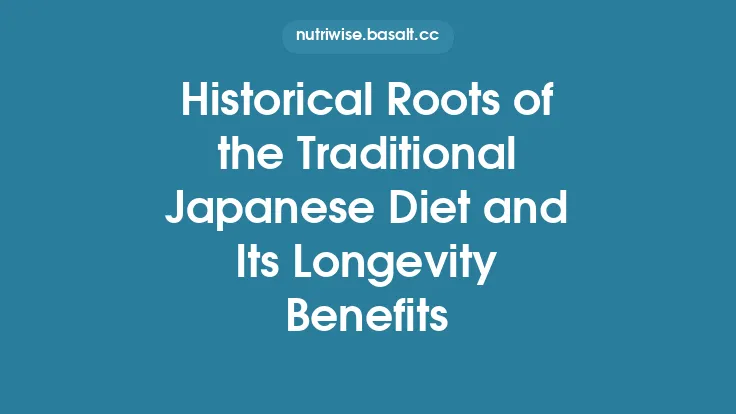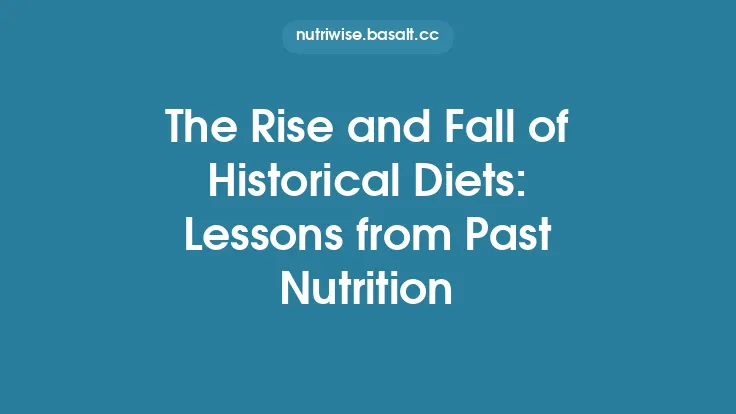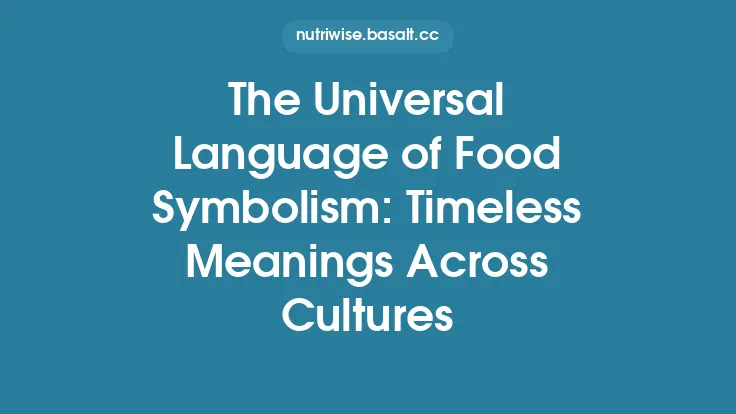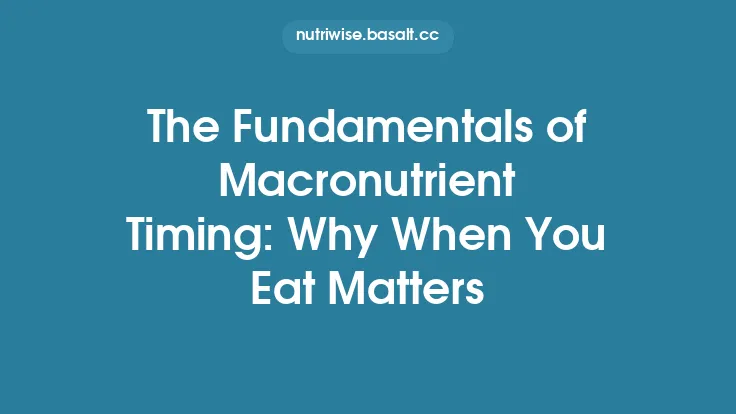The Mediterranean table has long been celebrated for its harmony of flavors, its emphasis on fresh, locally‑sourced ingredients, and its ability to nourish both body and community. At its core, the traditional Mediterranean meal is not merely a collection of dishes; it is a structured experience that reflects geography, climate, history, and social customs. Understanding how this structure is built helps reveal why the region’s cuisine has endured for centuries and why it continues to be a model for balanced eating worldwide.
Historical Roots of the Mediterranean Plate
The Mediterranean basin has been a crossroads of trade, conquest, and cultural exchange for millennia. From the ancient Greek symposium to the Roman convivium, meals were organized around a set of principles that balanced practicality with hospitality:
- Seasonality and locality – Before modern transportation, people relied on what could be grown, fished, or herded nearby. This fostered a diet rich in vegetables, fruits, legumes, and seafood that changed with the seasons.
- Collective dining – Meals were communal events, often shared from a central platter. The layout of the table mirrored the social hierarchy, with the host’s place of honor and a shared space for conversation.
- Balance of flavors – The ancient Greeks identified the “four tastes” (sweet, sour, salty, bitter) and sought to incorporate them in each meal, a practice that persists in the modern Mediterranean palate.
These historical patterns laid the groundwork for the meal structure that still guides kitchens from the Greek islands to the Spanish coast.
Core Components of a Traditional Mediterranean Meal
A classic Mediterranean meal is built around a few foundational pillars, each serving a distinct purpose:
- Bread or grain base – Often a whole‑grain flatbread, sourdough loaf, or a serving of barley or farro.
- Vegetable medley – Fresh, cooked, or pickled vegetables that provide fiber, vitamins, and texture.
- Legume or pulse element – Chickpeas, lentils, or beans, offering plant‑based protein and complex carbohydrates.
- Protein source – Primarily fish, seafood, or poultry; red meat appears sparingly.
- Healthy fat component – Extra‑virgin olive oil, nuts, or olives, delivering monounsaturated fats and flavor depth.
- Acidic accent – Lemon juice, vinegar, or fermented products that brighten the palate.
- Herbs and spices – Fresh herbs (oregano, basil, rosemary, thyme) and modest spice use (cumin, paprika) to enhance aroma without overwhelming the dish.
These elements are not served in isolation; they intertwine on the plate, creating a mosaic of taste, texture, and nutrition.
The Role of Bread and Grains
Bread occupies a symbolic and practical place in Mediterranean meals. In Greece, pita or horiatiko (country bread) is used to scoop dips, wrap fillings, or simply accompany soups. In Italy, farro and couscous (in the southern islands) serve as hearty bases for stews. The grain component fulfills several functions:
- Energy provision – Whole grains supply complex carbohydrates that release glucose slowly, supporting sustained energy.
- Fiber source – The bran and germ layers contribute soluble and insoluble fiber, aiding digestion and glycemic control.
- Cultural continuity – Bread is often blessed or shared as a sign of hospitality, reinforcing communal bonds.
Modern nutrition science confirms that the high‑fiber, low‑glycemic nature of these grains aligns with the Mediterranean diet’s cardioprotective profile.
Vegetables, Legumes, and the Plant‑Based Emphasis
Vegetables dominate the Mediterranean plate, both raw and cooked. Staples include tomatoes, eggplant, zucchini, bell peppers, leafy greens (spinach, arugula, kale), and cruciferous varieties (broccoli, cauliflower). Their preparation methods—grilling, roasting, sautéing in olive oil, or simmering in broth—preserve nutrients while adding depth.
Legumes, especially chickpeas (used in Greek *revithada and Italian cicoria e ceci*) and lentils, are prized for:
- Protein complementarity – When paired with grains, legumes provide a complete amino acid profile.
- Micronutrient density – They are rich in iron, folate, and magnesium, essential for metabolic health.
- Satiety – The combination of fiber and protein promotes fullness, supporting portion control.
The plant‑centric focus also reflects the agrarian roots of the region, where vegetable gardens were integral to household sustenance.
Proteins: Fish, Poultry, and Limited Red Meat
Seafood is the primary animal protein in many Mediterranean coastal communities. Sardines, anchovies, mackerel, and octopus are abundant, offering high levels of omega‑3 fatty acids (EPA and DHA) that contribute to cardiovascular health. Inland areas rely more on poultry (roasted chicken, duck) and small amounts of lamb or goat, often prepared with herbs and citrus to keep the meat tender and flavorful.
Red meat appears sparingly, typically reserved for special occasions or as a flavor accent (e.g., cured prosciutto in Italy). This limited consumption aligns with epidemiological data linking lower red meat intake to reduced risk of chronic diseases.
Healthy Fats and Flavor Foundations
Extra‑virgin olive oil (EVOO) is the cornerstone of Mediterranean fat intake. Its benefits stem from:
- Monounsaturated fatty acids (MUFA) – Oleic acid improves lipid profiles by raising HDL cholesterol and lowering LDL cholesterol.
- Polyphenols – Antioxidant compounds (hydroxytyrosol, oleocanthal) exhibit anti‑inflammatory properties.
- Culinary versatility – EVOO serves as a cooking medium, dressing base, and finishing drizzle, enhancing both taste and nutrient absorption (e.g., fat‑soluble vitamins A, D, E, K).
Nuts (almonds, walnuts, pistachios) and olives themselves add texture and additional sources of MUFA and polyunsaturated fatty acids (PUFA).
Meal Sequencing and Portion Philosophy
Traditional Mediterranean meals follow a loosely defined sequence that balances palate stimulation and digestion:
- Opening – Light, refreshing items such as olives, fresh cheese, or a small salad dressed with lemon and olive oil. This awakens the appetite without overwhelming the stomach.
- Main course – A protein‑centered dish (grilled fish, baked chicken) accompanied by vegetables and grains. Portion sizes are moderate; the emphasis is on variety rather than volume.
- Side and accompaniment – Additional vegetable dishes, legumes, or a second salad, often served family‑style to encourage sharing.
- Dessert – Fruit, honey‑sweetened yogurt, or a modest serving of pastries (e.g., baklava) that provide natural sugars and a satisfying finish.
- Digestif – Occasionally a small glass of wine or herbal tea, reflecting the region’s tradition of moderate alcohol consumption with meals.
Portion philosophy is guided by the “plate method”: half the plate filled with vegetables, a quarter with whole grains or legumes, and a quarter with protein, all bound together by a drizzle of olive oil. This visual cue helps maintain macronutrient balance without the need for precise weighing.
Social and Seasonal Context
Meals are deeply embedded in the social fabric of Mediterranean life:
- Family‑centric timing – Lunch is often the main meal, taken together after a midday break, while dinner is lighter and more relaxed.
- Seasonal festivals – Harvest celebrations (e.g., grape crushing, olive picking) introduce special dishes that showcase the season’s bounty.
- Outdoor dining – Warm climates encourage al fresco eating, which promotes slower consumption and greater enjoyment of food’s sensory qualities.
Seasonality dictates ingredient availability, ensuring that the diet remains diverse throughout the year. For instance, summer brings tomatoes, cucumbers, and figs; autumn introduces pumpkins, chestnuts, and pomegranates.
Nutritional Balance and Health Implications
Extensive research has linked the traditional Mediterranean meal structure to a range of health benefits:
| Nutrient Focus | Typical Sources | Health Impact |
|---|---|---|
| Monounsaturated fats | Olive oil, olives, nuts | Improves lipid profile, reduces inflammation |
| Omega‑3 fatty acids | Fatty fish, sardines, anchovies | Supports cardiovascular health, brain function |
| Dietary fiber | Whole grains, legumes, vegetables, fruits | Enhances gut microbiota, lowers cholesterol |
| Antioxidants | Fresh herbs, tomatoes (lycopene), citrus, red wine (resveratrol) | Protects cells from oxidative stress |
| Low saturated fat | Minimal red meat, limited butter | Decreases risk of atherosclerosis |
The synergy of these components—high fiber, healthy fats, moderate protein, and abundant phytonutrients—creates a dietary pattern that is associated with lower incidence of heart disease, type 2 diabetes, certain cancers, and neurodegenerative disorders.
Modern Adaptations and Preservation of Tradition
While globalization introduces new ingredients, many Mediterranean households preserve the core structure by:
- Incorporating new vegetables (e.g., quinoa salads) while maintaining the grain‑legume‑vegetable balance.
- Adapting cooking techniques (e.g., using a grill instead of a deep fryer) to retain the healthful profile.
- Embracing plant‑based alternatives (e.g., chickpea “meatballs”) that align with the region’s historic reliance on legumes.
Educational initiatives and culinary tourism further reinforce the value of the traditional meal layout, encouraging younger generations to adopt the same principles in contemporary kitchens.
By weaving together history, geography, and nutrition, the traditional Mediterranean meal structure offers a timeless blueprint for balanced eating. Its emphasis on fresh, whole foods, modest portions, and communal enjoyment not only sustains physical health but also nurtures cultural identity—a testament to the enduring power of a well‑crafted plate.





